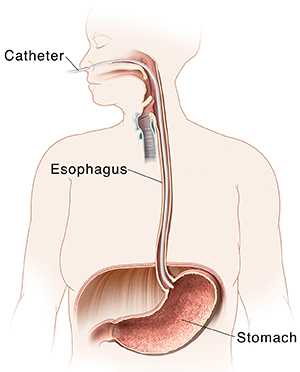Esophageal Manometry
Esophageal Manometry

Preparing for the test
Be sure to talk to your healthcare provider about any medicines you take. Some medicines can affect the test results. Also ask any questions you have about the risks of the test. These include irritation to the nose and throat. Be sure not to smoke, eat, or drink for up to 12 hours before the test.
During the test
Manometry takes about an hour. Usually you lie down during the test. Your nose and throat are numbed. Then a soft, thin tube is placed through the nose and down the esophagus. At first you may notice a gagging feeling. You will be asked to swallow several times. Holes along the tube measure the pressure while you swallow. Measurements are printed out as tracings, much like a heart test tracing. After the test, another catheter may be left in the esophagus for up to 24 hours to measure acid (pH) levels.
After esophageal manometry
You’ll probably discuss the results of the test with your healthcare provider at another appointment. This is because time is needed to review the tracings. You may have a mild sore throat for a short time. As soon as the numbness in your throat is gone, you can return to eating and your normal activities.
Updated:
September 08, 2018
Reviewed By:
Image reviewed by StayWell medical illustration team.,Kolbus, Karin, RN, DNP, COHN-S,Lehrer, Jenifer, MD